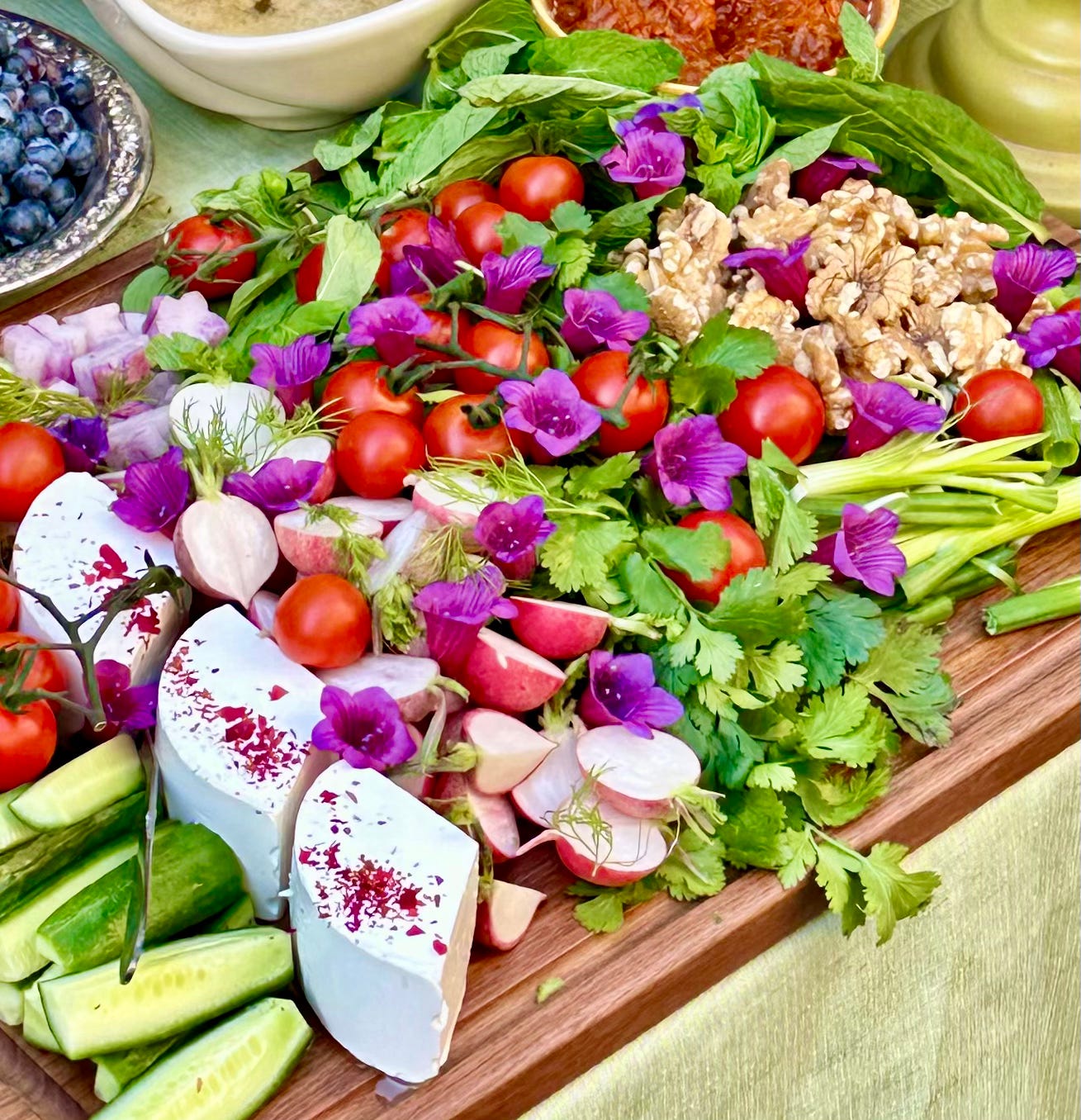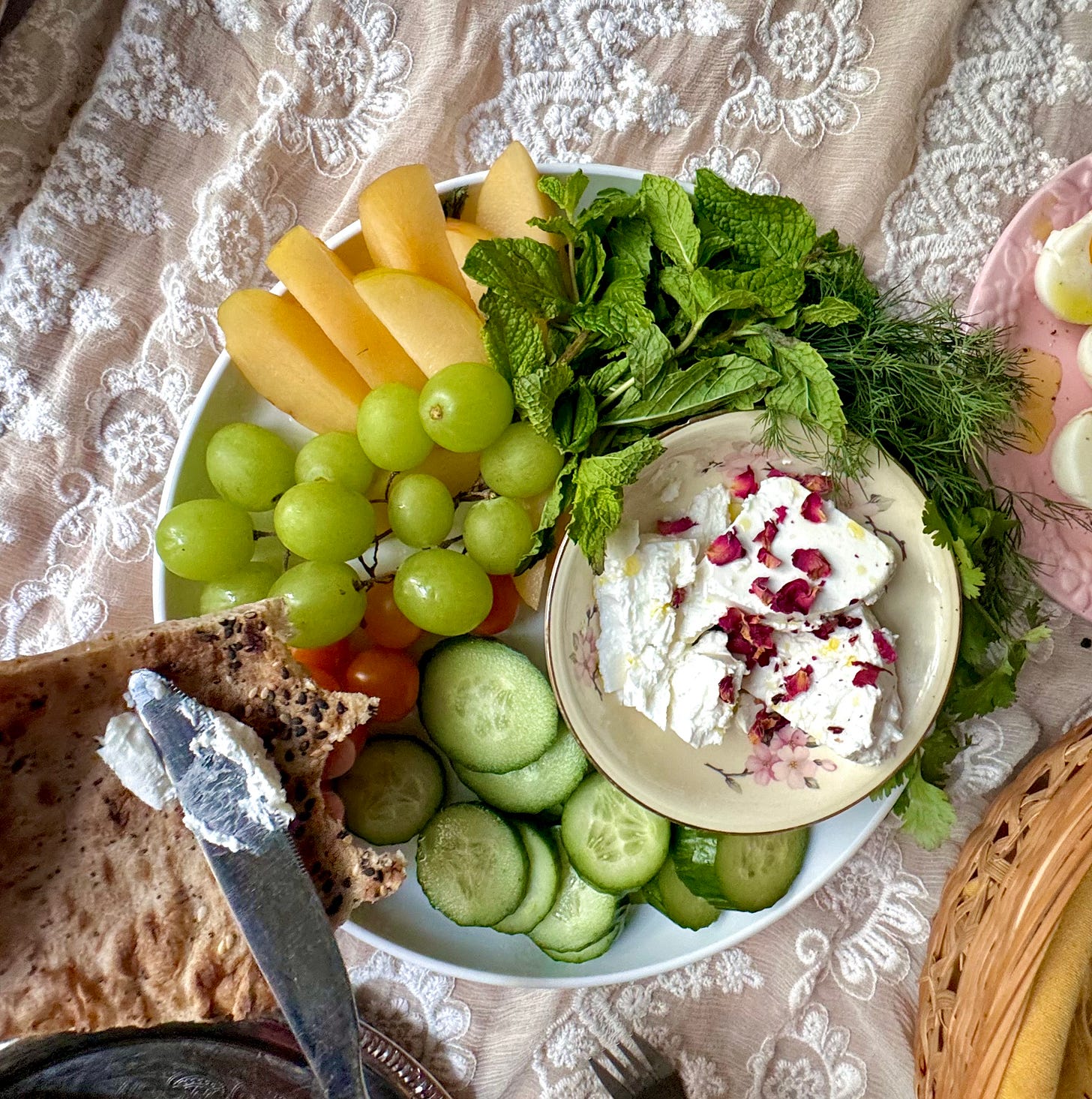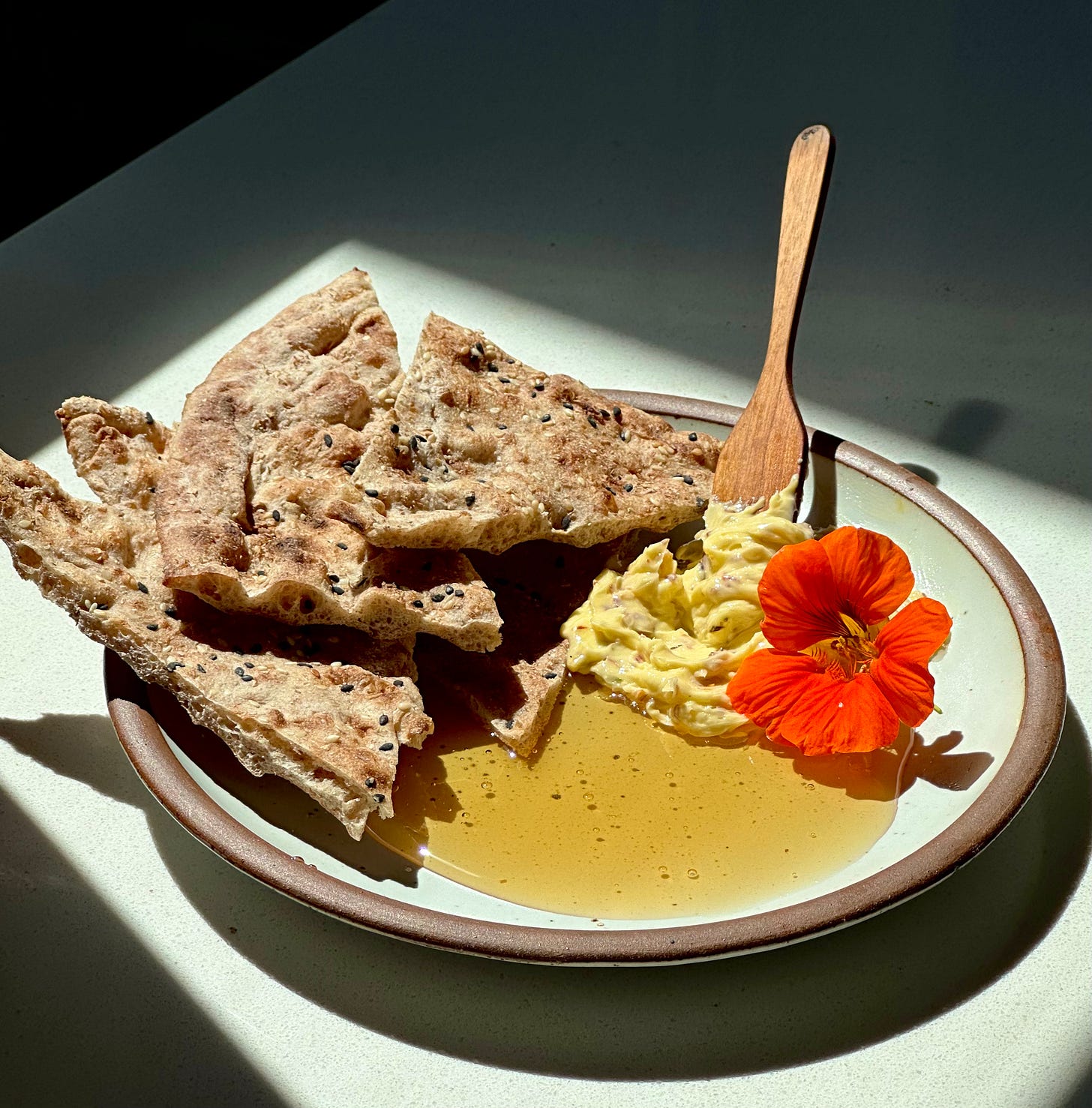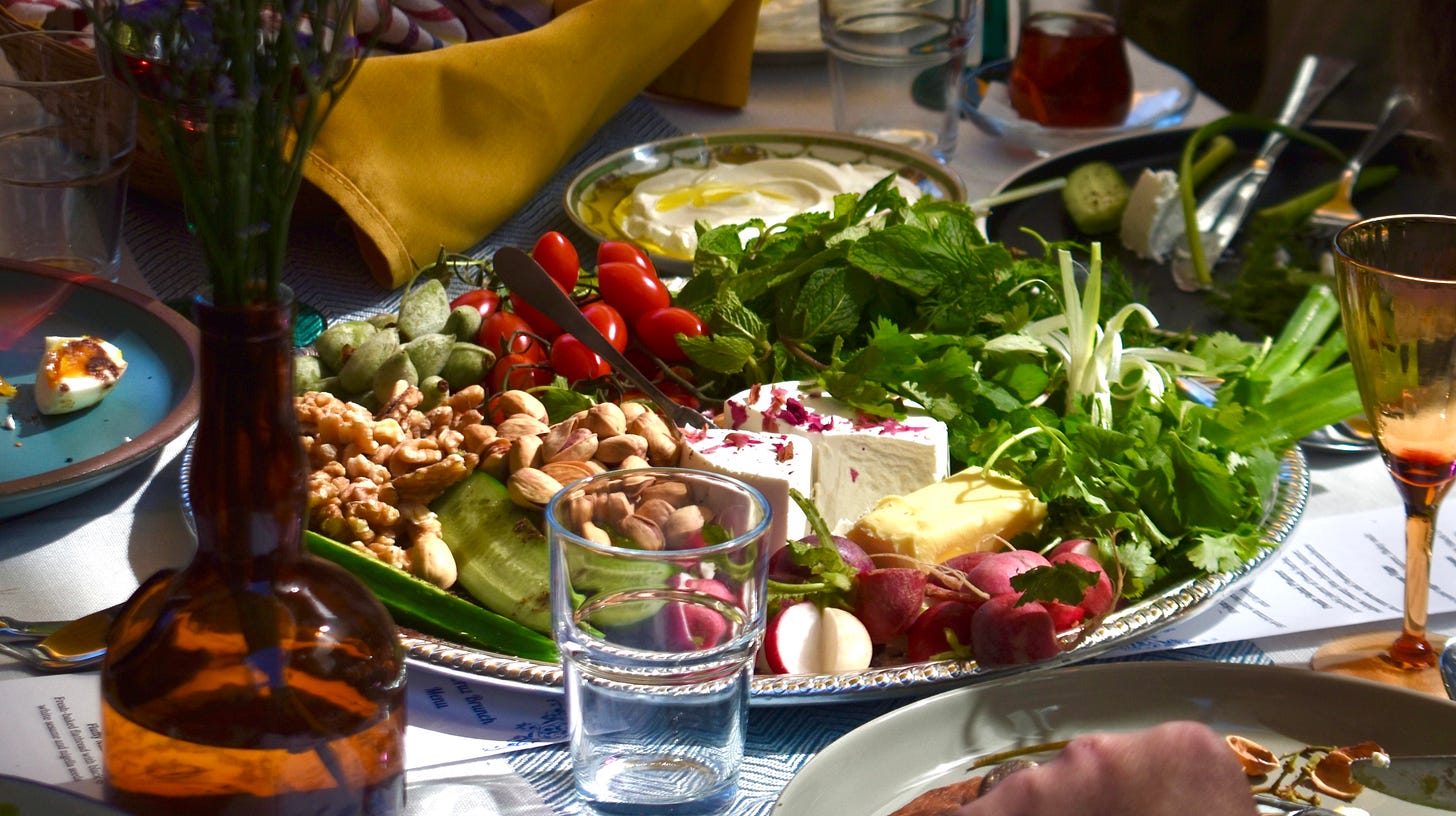Everything I have ever done has led to today’s newsletter.
I made a whole career out of serving this fresh, delicate platter all around California, filled with tender bounties of herbs and colorful earthly offerings. I’m not doing anything new, though. Our mamans, grandmothers, and ancestors have been doing this far longer and better than I ever could. What I offer is simply an homage to them. And so, I write this guide for you, as a way to honor them through the act of remembering, sharing, and gathering.
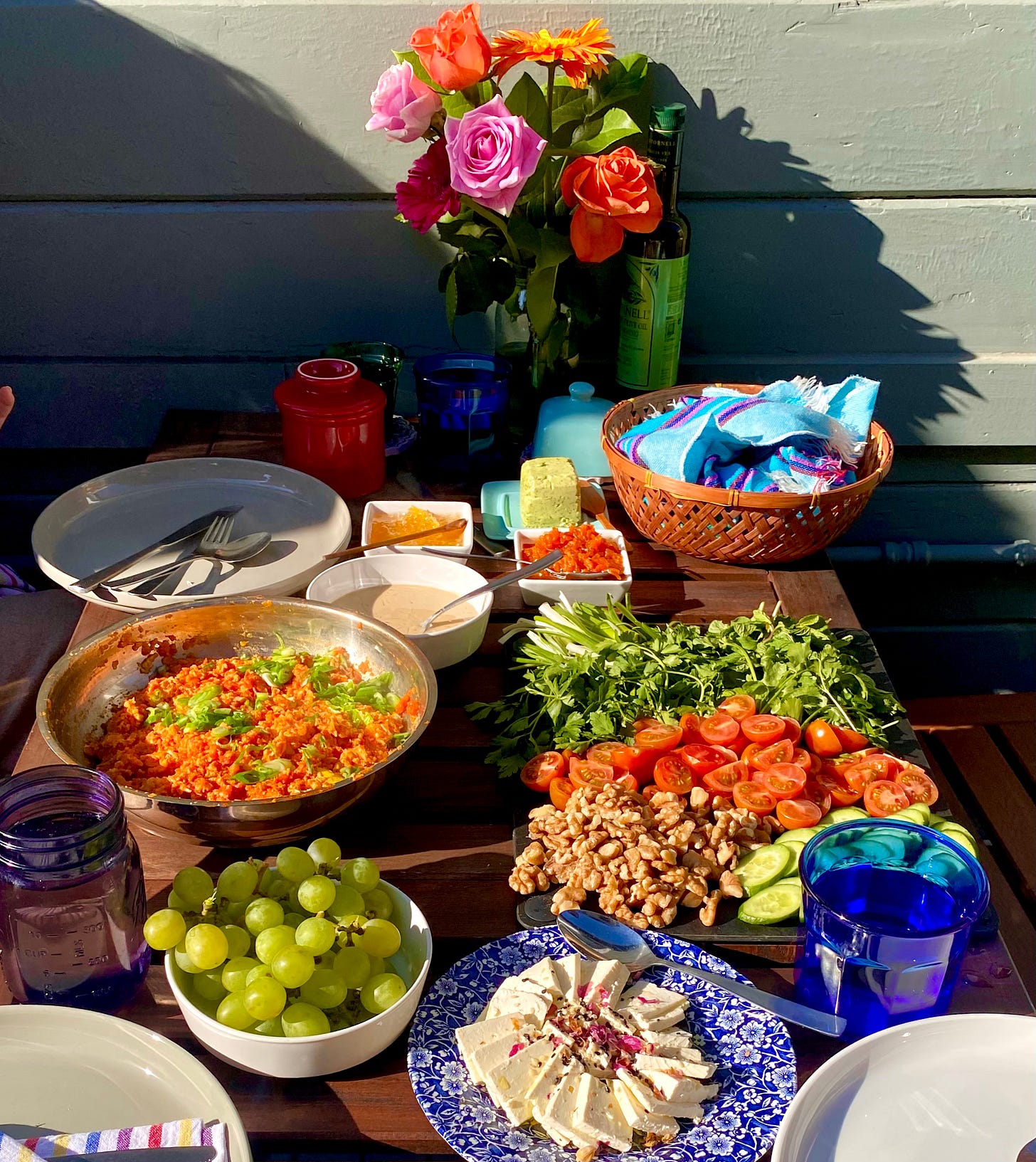
This guide isn’t just a recipe; it’s an invitation. To gather and savor. To bring beauty into the everyday. Noon-panir-sabzi (bread, cheese, and herbs) is more than a breakfast spread or appetizer plate. It is lifetimes of history and ancestral knowledge. It is nourishment and care.
A quiet celebration of togetherness, a testament to the beauty of simplicity.
This vessel for gathering holds the ultimate truth about Iranian food: that it is meant to be shared.
Noon-panir-sabzi (bread, cheese, and herbs) is often served for breakfast, as a side dish, or as a shareable appetizer. It adds color and life to every meal. It also stands on its own as the perfect fresh and light meal or snack for any time of day. You can use this guide to inspire your next breakfast spread, snack plate, cheeseboard, or anything else you are preparing for sharing.
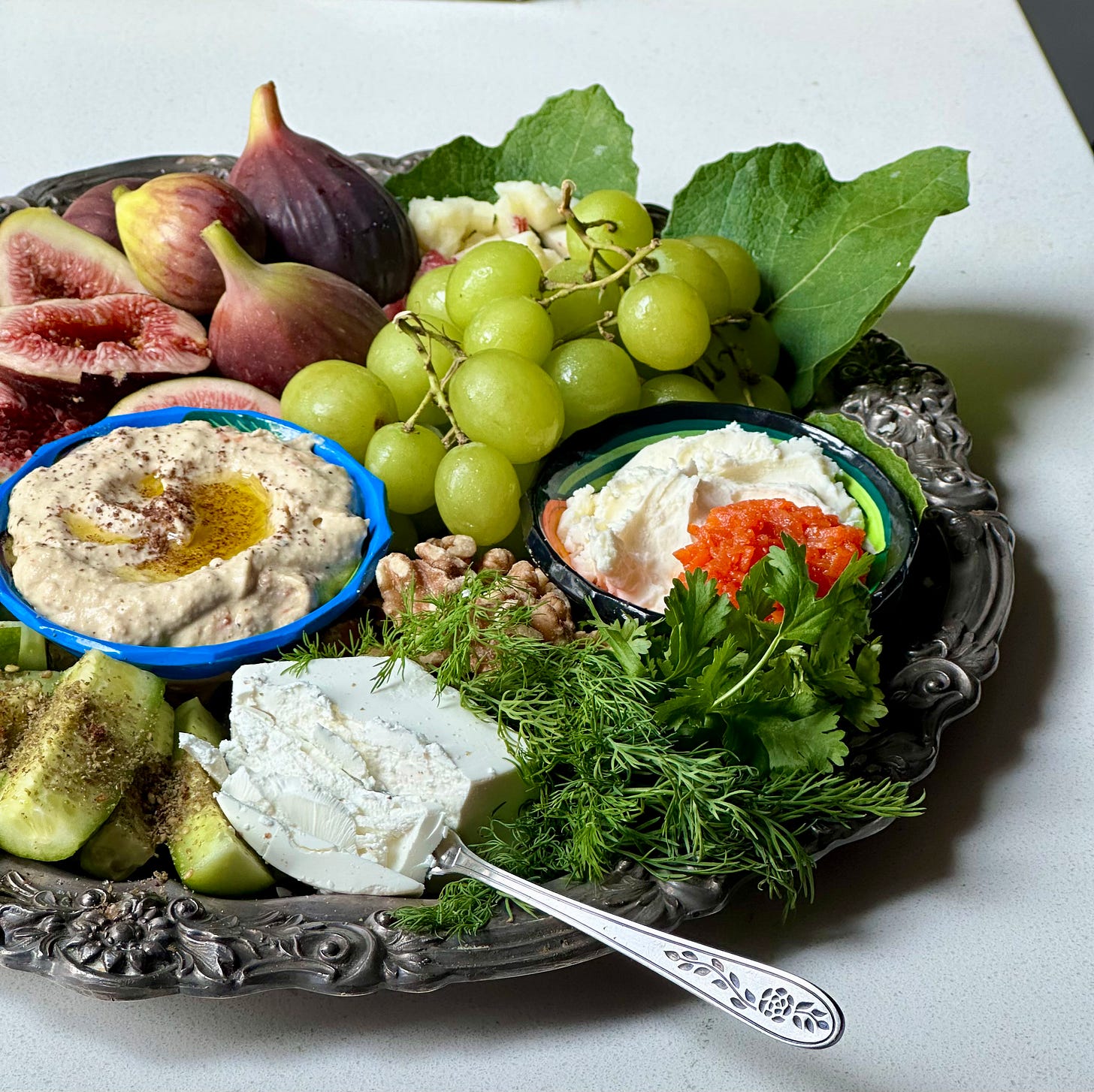
The ingredients of this spread vary across regions of Iran, shaped by geography and lineage. What follows is a general guide on how to make and enjoy an Iranian-inspired spread around herbs, and an overview of the most common ingredients in a traditional Persian breakfast.
The Spread
Common elements of a Persian breakfast spread can be:
Fresh herbs (sabzi)
Tomatoes and Persian cucumbers
Walnuts
Fruits, commonly watermelon or grapes
Fresh dairy: feta cheese, butter, clotted cream
Honey and jams
Eggs, simply fried, boiled, scrambled, or dishes like املت (ómlet: tomato scrambled eggs) or نرگسی (nargesi: spinach eggs)
Sesame Halva or Tahini & Honey
The various elements of this spread are enjoyed with fresh bread, over black tea, and conversation.

لقمه: Loghmeh/ How to enjoy
Enjoying a spread of Persian breakfast is a grounding ritual, an opportunity for loved ones to connect, slow down, and be present together.
To enjoy your beautiful breakfast spread, tear a small piece of bread, build your own bite on that piece of bread, and fold it into a small taco-like bite. Each small bite that you create is called a Loghmeh لقمه. There are many different ways to assemble your Loghmeh; sweet or savory. For a sweet loghmeh, spread butter or clotted cream on the bread and top it with jam or honey. Savory variations of the loghmeh are countless, because there are so many variations of toppings that you can use.
To make a savory loghmeh, spread some of the creamy feta cheese on the bread, then top it with your favorite combination of fresh herbs, nuts, cucumber slices, etc. The basic version of a loghmeh contains cucumbers, tomatoes, and walnuts. But you can choose your own adventure. Mix and match different toppings, experiment with various herbs and nuts to find your own favorite combination.
My favorite combination is walnut, mint, and grape on top of creamy feta. What’s your favorite Loghmeh?
نون: Noon/ Bread
There is nothing quite like butter melting on fresh, toasty bread. Taftoon, sangak, or barbari, are some of the widely used types of Iranian flatbreads, all of which are perfect to enjoy with your Persian breakfast. You can find these breads at many Iranian/ Afghan/ Middle-Eastern grocery stores. If there are no sangak or barbari bread available where you live, some alternatives can be lavash, pita, or any flatbread that is accessible to you. Make sure to warm your bread to a toasty level before enjoying this magical breakfast spread.
سبزی: Sabzi/ Herbs
In Farsi, Sabzi means greenery, but it also refers to herbs as a general category. Some of the common fresh tender herbs for noon-panir-sabzi are: dill, mint, basil, cilantro, tarragon, savory, parsley, scallions, and chives. Choose a variety of herbs, wash, dry, and remove the hard part of the stems, and use your creativity to arrange them like a bouquet, on the platter, along with your other breakfast ingredients.
What herbs do you include in your noon-panir-sabzi spread?
پنیر: Panir/ Cheese
The iconic cheese of Persian breakfast is a creamy feta, so creamy that it is spreadable, often made with sheep or cow’s milk. This can also be found under various brands at your local Middle Eastern/Mediterranean grocery store.
Keep reading with a 7-day free trial
Subscribe to Dill Naamé دل نامه to keep reading this post and get 7 days of free access to the full post archives.




